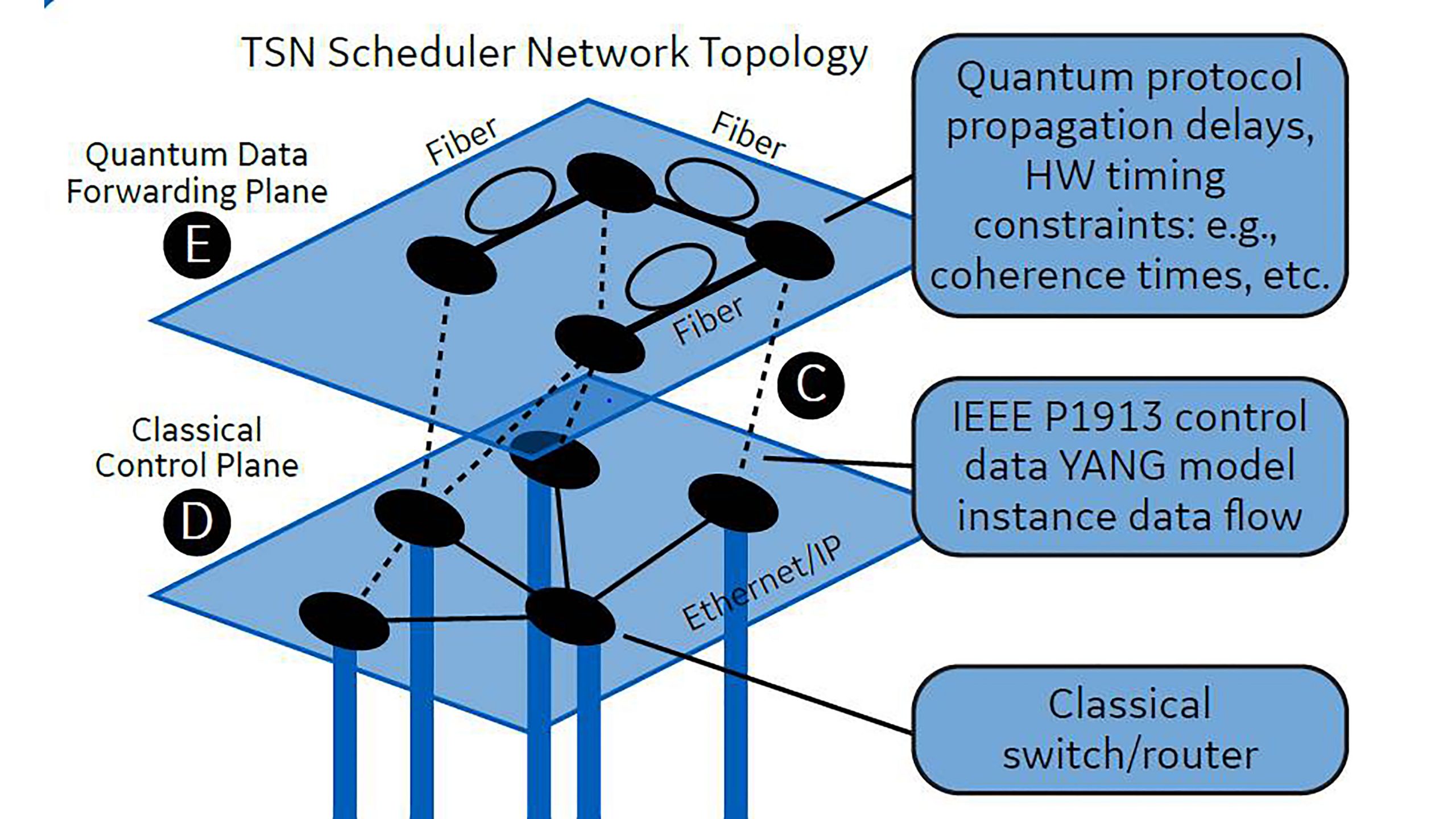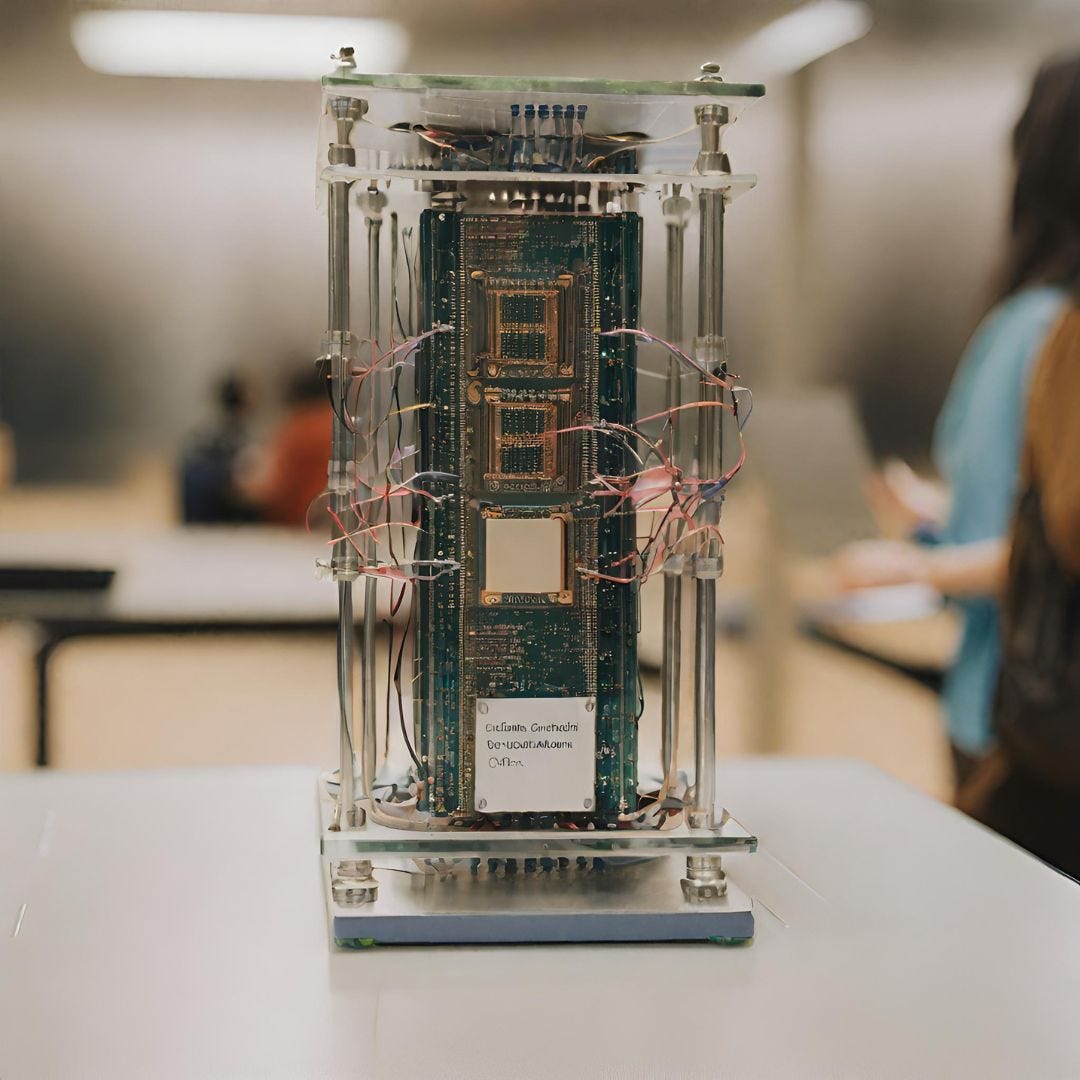
Introduction
Understanding Quantum Networks
Quantum networks represent a cutting-edge innovation in information technology, relying on the principles of quantum mechanics. At their core, these networks utilize quantum bits or qubits, distinct from classical bits. While classical bits control information in states of either 0 or 1, qubits can embody a superposition of both states simultaneously. This enables quantum networks to perform computations and communications at unprecedented speeds and efficiencies.
A personal anecdote comes to mind: during a recent seminar on quantum technologies, the speakers compared classical networks to a crowded highway, where cars are stuck in traffic, while quantum networks are akin to a series of express lanes. This analogy illustrates the remarkable potential of quantum systems in handling vast amounts of data through parallelism.
Significance of Quantum Networks
The significance of quantum networks cannot be overstated. As they emerge, they promise to revolutionize various fields, including:
- Secure communications through quantum key distribution.
- Enhanced computational capabilities leading to breakthroughs in scientific research.
- Transformative applications in cryptography, making eavesdropping virtually impossible.
With the rapid development of this technology, understanding quantum networks will become increasingly essential, as they herald a new era of connectivity and security. As we delve deeper into their fundamentals and potential applications, the Future of Quantum Networks is looking ever more promising.

Fundamentals of Quantum Networking
Quantum Entanglement
At the heart of quantum networking lies the fascinating concept of quantum entanglement. This phenomenon occurs when pairs or groups of qubits become interconnected in such a way that the state of one qubit instantly influences the state of another, no matter how far apart they are. Imagine having a pair of magic dice; roll one, and the other one will always follow suit, regardless of distance. This unique relationship not only makes quantum communication feasible but also extraordinarily secure.
Quantum Superposition
Accompanying entanglement is the principle of quantum superposition. A qubit can exist in multiple states at once—instead of just being a 0 or a 1, it can be both simultaneously. This allows quantum networks to carry and process significantly more information than classical networks, which is paramount for modern applications.
Quantum Teleportation
Next, we encounter quantum teleportation—no, not the sci-fi version, but a revolutionary method of transmitting qubits. It allows the transfer of quantum information from one location to another without physically moving the qubits themselves. This method relies on entanglement and superposition, creating the illusion of faster-than-light communication, which brings endless possibilities for future communications.
Quantum Key Distribution
Lastly, quantum key distribution (QKD) is an essential application of quantum networking. Unlike traditional methods, QKD uses the principles of quantum mechanics to ensure that any attempt at eavesdropping changes the state of the qubits, alerting the parties involved. Thus, it establishes a level of security that classical cryptography simply cannot match.
These fundamental principles are not just theoretical; they are leading us into the uncharted waters of the Future of Quantum Networks, promising smarter and more secure technological advancements.

Building Blocks of Quantum Networks
Building on the fundamental principles discussed previously, the architecture of quantum networks consists of several key components that make their operation feasible.
Quantum Nodes
First up are quantum nodes, which can be thought of as the essential ‘hubs’ of quantum networks. These nodes are responsible for generating, storing, and processing quantum information. A personal experience resonates here: during a lab tour, I watched researchers manipulate qubits in real-time, transforming abstract concepts into tangible results. This highlighted how crucial these nodes are in maintaining quantum states and facilitating communication between users.
Quantum Channels
Next, we have quantum channels, the conduits that allow information to flow between quantum nodes. These channels can be physical, such as fiber-optic cables or free-space links, and play a pivotal role in maintaining the integrity of quantum signals. Just as a clear pathway is essential for an uninterrupted road trip, a reliable quantum channel ensures seamless communication in quantum networks.
Quantum Repeaters
Lastly, quantum repeaters serve as the vital link for long-distance quantum communications. They help overcome the challenges of decoherence and loss that occur over large distances by boosting or regenerating quantum signals. Think of them as the relay stations on a long marathon—without them, the signal would weaken, affecting overall performance.
Together, these building blocks lay the foundation for the robust architecture of quantum networks, paving the way for exciting advancements in the Future of Quantum Networks.

Challenges in Quantum Network Development
As we continue to explore the intricate landscape of quantum networks, it’s essential to recognize the hurdles that researchers and developers face in maximizing their potential.
Quantum Decoherence
One of the most pressing challenges is quantum decoherence. This phenomenon occurs when quantum information deteriorates due to interaction with the environment, essentially causing qubits to lose their quantum state. I remember attending a discussion where scientists vividly described decoherence as trying to listen to music in a loud crowd; the original sound gets drowned out. Finding effective ways to maintain qubit integrity is crucial for the stability of quantum networks.
Quantum Error Correction
Next on the list is quantum error correction, a fundamental necessity for ensuring the reliability of quantum computations and communications. Unlike classical error-checking methods, quantum error correction is more complex due to the nature of quantum states. It involves encoding the information in such a way that errors can be detected and corrected without directly measuring the quantum state. Imagine trying to fix a puzzle without touching the pieces—this is the kind of innovative thought required to tackle this challenge.
Quantum Security
Lastly, establishing robust quantum security poses a unique challenge, despite the inherent security advantages of quantum networks. While quantum key distribution offers secure communication, the underlying infrastructure can still be vulnerable to various attacks. This requires ongoing research and development to stay ahead of potential threats.
Navigating these challenges is vital for unlocking the full capabilities of quantum networks and realizing the Future of Quantum Networks. Addressing these issues will not only enhance performance but also make quantum technology accessible and reliable in practical applications.

Applications of Quantum Networks
Having explored the challenges confronting quantum network development, it’s inspiring to look at the exciting applications that these networks can bring to life.
Quantum Internet
One of the most promising applications is the Quantum Internet, a revolutionary concept that aims to connect quantum systems globally. Imagine a scenario where information can be transmitted seamlessly and securely across networks without any risk of interception. During a recent tech expo, I witnessed a demonstration showcasing this potential—participants were amazed at how quantum entanglement could enable instantaneous communication, transforming everything from data sharing to online transactions.
Quantum Cryptography
Another vital application is quantum cryptography, particularly quantum key distribution (QKD). This security measure guarantees that sensitive information remains private by encoding data in quantum states. It triggered a lightbulb moment for me when a speaker explained how even the slightest attempt to eavesdrop would alert the communicating parties, cementing QKD as a game-changer in information security. This ensures that our online dealings can be kept safe in an era of escalating cyber threats.
Quantum Sensing
Lastly, quantum sensing utilizes the precision of quantum networks to achieve unparalleled accuracy in measurements. Think of it as using the quirks of quantum mechanics to enhance everything from GPS systems to medical imaging. For instance, quantum sensors can potentially detect gravitational waves—an incredible leap forward in scientific research.
These applications not only highlight the transformative power of quantum networks but also emphasize their critical role in shaping the Future of Quantum Networks, promising a more secure and efficient digital landscape.

Future Implications and Possibilities
As we delve into the potential pathways of quantum networks, it’s exhilarating to envision the future implications and possibilities they hold.
Quantum Supremacy
One of the most talked-about concepts is quantum supremacy—the moment when quantum computers outperform their classical counterparts in problem-solving. I still remember the buzz following Google’s announcement of achieving quantum supremacy. This breakthrough heralded a new era of computation, presenting opportunities to tackle complex problems in fields like drug discovery and climate modeling in a fraction of the time it would take classical systems.
Quantum Cloud Computing
Following closely is the rise of quantum cloud computing, which aims to make quantum resources accessible to users globally. Imagine being able to tap into a powerful quantum processor remotely, which could democratize access to advanced computational power. During a technology conference, a young developer shared her vision of using cloud-based quantum systems to develop groundbreaking applications. The ability to leverage quantum computing for everyday tasks could revolutionize industries from finance to pharmaceuticals.
Quantum Machine Learning
Lastly, we cannot overlook the fusion of quantum networks with machine learning. Quantum machine learning could enhance algorithms and data processing capabilities, allowing incredibly accurate predictions and analyses. Personal stories from researchers in this field often reveal awe-inspiring moments as they apply quantum principles to achieve insights that were previously unimaginable.
These future possibilities not only reveal the immense potential of quantum networks but also signal a transformative era in technology that could reshape our world. The Future of Quantum Networks stands at the cusp of innovation, promising an extraordinary leap into uncharted territories.

Research and Development in Quantum Networking
Transitioning from the engaging possibilities for the future of quantum networks, it’s crucial to understand the current landscape of research and development that is fueling this evolution.
Quantum Communication Protocols
A significant focus in this domain is the development of quantum communication protocols. These protocols are designed to ensure the secure transfer of information over quantum networks. I recall attending a workshop where experts discussed quantum protocols like BB84, which uses quantum states for secure key distribution. It’s fascinating to see how these groundbreaking ideas are being systematically developed and refined to create robust frameworks for quantum communication.
Quantum Network Architectures
Next, researchers are diligently working on quantum network architectures. These architectures define how quantum nodes interact and communicate. Visually, I picture it as a blueprint for a futuristic city where each building (the quantum nodes) must effortlessly connect to facilitate smooth traffic (information flow). Emerging designs are exploring hybrid systems that integrate classical and quantum computing, showcasing the flexibility and creativity in this field.
Quantum Network Simulations
Lastly, quantum network simulations play a critical role in testing and validating theories before real-world implementation. Researchers often rely on simulations to visualize how quantum systems might behave under different conditions. I remember a conversation with a researcher who shared her excitement about using simulations to predict the behavior of entangled particles in various environments, which can save both time and resources during the development process.
Together, these areas of research and development are laying the groundwork for a successful and effective future for quantum networks. By continuously pushing the boundaries of knowledge, we inch closer to realizing the profound potential of the Future of Quantum Networks.

Collaborations and Initiatives in Advancing Quantum Networks
Moving forward from the essential research and development in quantum networking, it’s heartening to see numerous collaborations and initiatives driving this field toward unprecedented advancements.
Global Quantum Networks Projects
One of the most ambitious ventures is the Global Quantum Networks projects, which aim to establish interconnected quantum communications across continents. For instance, the Quantum Internet Alliance is working on a vision for a worldwide network. I remember reading about their efforts, which inspired the idea of a digital ecosystem where countries share quantum resources, much like an international stock exchange. This global collaboration could revolutionize how securely we share information across borders.
Industry Partnerships
Moreover, various industry partnerships are emerging. Tech giants, startups, and even governmental bodies are joining forces to accelerate quantum networking developments. A recent initiative I followed highlighted how companies like IBM and Google collaborate with academic institutions to share resources and expertise. This synergy allows for rapid innovation and scaling, as industry players leverage research to bring practical solutions to market.
Academic Research Consortia
Lastly, academic research consortia are pivotal in this effort. Universities worldwide are forming alliances to pursue projects that address significant challenges in quantum technology. For example, a consortium I learned about aims to develop standardized protocols for quantum networks, ensuring compatibility and interoperability. Engaging with leading researchers has been a thrilling experience, giving firsthand insights into the collaborative spirit that fuels progress in this dynamic field.
Through these collaborations and initiatives, quantum networking is on a trajectory to achieve remarkable breakthroughs, bringing us closer to the promising Future of Quantum Networks. The pooling of knowledge, resources, and expertise exemplifies how collective efforts can overcome challenges and spark innovative solutions.

Ethical and Societal Considerations
As we venture deeper into the world of quantum networks, it’s crucial to explore the ethical and societal implications that emerge alongside this groundbreaking technology.
Privacy and Security Concerns
One of the primary considerations is the privacy and security of individuals’ data. While quantum networks promise enhanced security through techniques like quantum key distribution, potential vulnerabilities could still be exploited. In a recent discussion I attended, experts debated how quantum advancements could inadvertently lead to new forms of cyber threats. The idea that our personal information might be more vulnerable even as we adopt higher security measures is a paradox that requires careful scrutiny.
Policy and Regulation in Quantum Networking
Next, effective policy and regulation are paramount. As quantum technologies develop rapidly, existing frameworks may not adequately cover the nuances of these innovations. During a seminar, a policy analyst mentioned the need for international agreements to ensure ethical standards in quantum research and deployment. Establishing clear regulations can help manage risks associated with inequitable access to quantum advancements and guide responsible usage.
Societal Impact of Quantum Network Technologies
Finally, we must consider the broader societal impacts. Quantum networks could lead to transformative changes in fields like healthcare, finance, and education, but they may also exacerbate inequalities if access is limited to wealthier nations or companies. Reflecting on my own experiences in tech discussions, it became evident that we need inclusive initiatives to ensure that benefits reach all members of society.
By addressing these ethical and societal considerations, we can help guide the responsible advancement of quantum networks, paving the way for a more equitable and secure technological future. The Future of Quantum Networks is as much about ethical responsibility as it is about technological possibilities.

Conclusion
As we conclude our exploration into quantum networks, it’s essential to reflect on the remarkable evolution this field has undergone.
Recap of Quantum Network Evolution
From the foundational concepts of quantum entanglement and superposition to the development of sophisticated communication protocols, quantum networking has progressed rapidly. The journey has been characterized by groundbreaking discoveries, collaborative efforts across global projects, and continuous innovation in both academic and industrial realms. I recall attending a conference that traced this evolution, showcasing just how far we’ve come in harnessing quantum mechanics to enhance our technological landscape.
Future Prospects and Challenges
Looking ahead, the prospects are incredibly promising. With advancements in quantum cloud computing, quantum machine learning, and secure communication, the potential applications seem limitless. However, challenges remain—privacy concerns, the necessity for robust policies, and the ethical implications of equitable access to these technologies. As discussed in previous sections, navigating these complexities will be vital in ensuring that the benefits of quantum networks reach everyone.
In summary, the Future of Quantum Networks is poised for exciting developments, but a balanced approach will be essential to harness the full potential of this transformative technology. Continued engagement, research, and ethical consideration will guide us into this thrilling new era.

